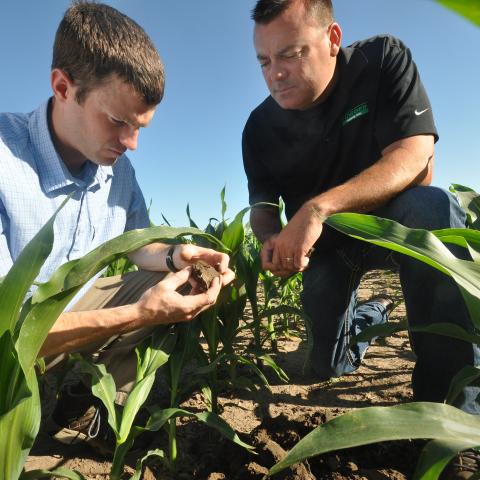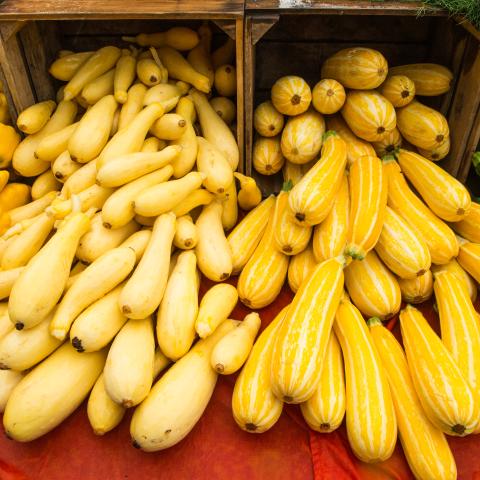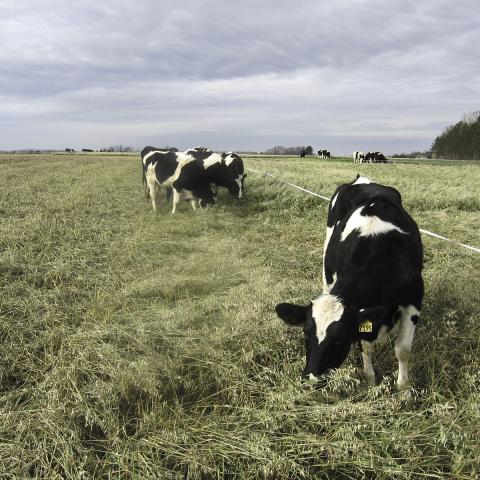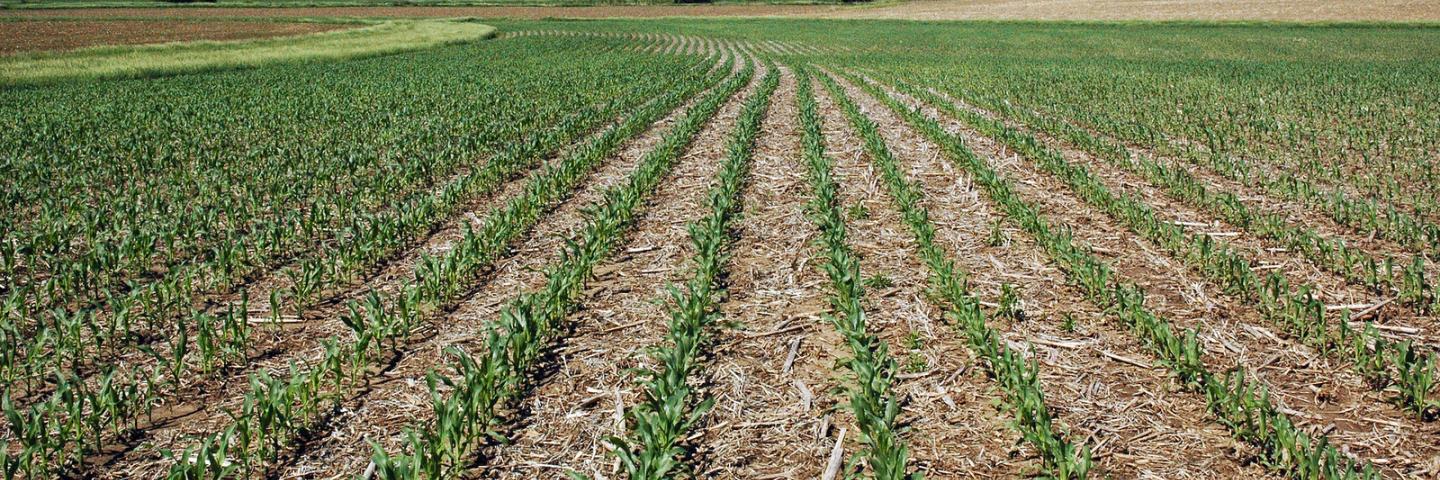
Soil Health is soil managed to its maximum potential through a system of conservation practices, including no-till, cover crops, advanced nutrient and pest management, and buffers and drainage systems where appropriate.
Why is soil health important?
Managing your soil using soil health practices results in healthy soil that reduces erosion, requires less nutrient inputs, manages the effects of flood and drought, and reduces nutrient and sediment loading to streams and rivers.
Soil health is defined as the continued capacity of soil to function as a vital living ecosystem that sustains plants, animals, and humans. Healthy soil gives us clean air and water, bountiful crops and forests, productive grazing lands, diverse wildlife, and beautiful landscapes. Soil does all this by performing five essential functions:
- Regulating water – Soil helps control where rain, snowmelt, and irrigation water goes. Water flows over the land or into and through the soil.
- Sustaining plant and animal life – The diversity and productivity of living things depends on soil.
- Filtering and buffering potential pollutants – The minerals and microbes in soil are responsible for filtering, buffering, degrading, immobilizing, and detoxifying organic and inorganic materials, including industrial and municipal by-products and atmospheric deposits.
- Cycling nutrients – Carbon, nitrogen, phosphorus, and many other nutrients are stored, transformed, and cycled in the soil.
- Providing physical stability and support – Soil structure provides a medium for plant roots. Soils also provide support for human structures and protection for archeological treasures.
Soil health research has determined how to manage soil in a way that improves soil function.
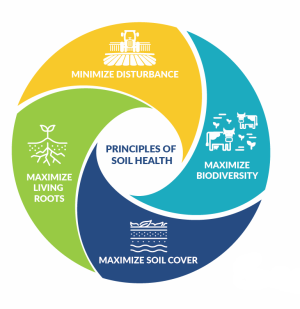
The main principles to manage soil for health are:
- Maximize Presence of Living Roots
- Minimize Disturbance
- Maximize Soil Cover
- Maximize Biodiversity
As world population and food production demands rise, keeping our soil healthy and productive is of paramount importance. By farming using soil health principles and systems that include no-till, cover cropping, and diverse rotations, more and more farmers are increasing their soil’s organic matter and improving microbial activity. As a result, farmers are sequestering more carbon, increasing water infiltration, improving wildlife and pollinator habitat—all while harvesting better profits and often better yields.
Soil Health Resources
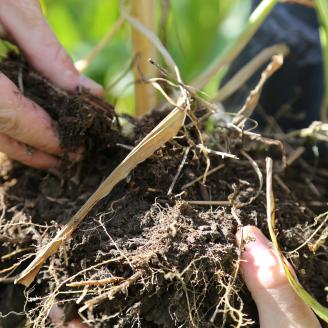
Virtual Field Days
In collaboration with Natural Resources Conservation Service, learn more about soil health topics with University of Idaho Extension through virtual field days.
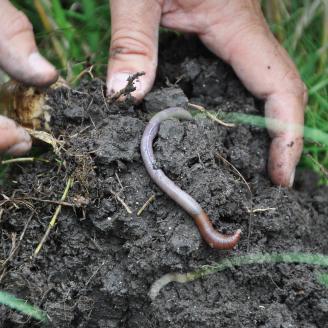
Direct Seed Spuds
A seed potato is a potato that has been grown to be replanted to produce a potato crop. It’s the usual way that potatoes are made available to farmers and growers.
SE IDAHO
Report from on-farm demonstration near Rigby with detailed information. Modified a planter and put it to work, successful. Reduced erosion, good yield. https://projects.sare.org/sare_project/fw17-055/
Short article on presentation given by the Rigby grower. https://www.capitalpress.com/state/idaho/idaho-grower-pleased-with-no-till-spuds/article_f0116cb4-d05f-5a2e-9c89-8ac0c9a046db.html
E. WASHINGTON
Safeguarding Potato Cropping Systems in the Pacific Northwest through Improved Soil Health - You’ll find this article down the page a bit and the entire document is great but especially the photos on pp. 21-23. And there’s loads of good content in general at the link: https://csanr.wsu.edu/publications-library/soils-fertility/soil-health/
MANITOBA, CANADA
Utilizing a modified Spudnik (Idaho company) planter, this on-farm demonstration was a success. Good photos as well. https://spudsmart.com/reducing-tillage-but-not-quality/
Improving Soil Health in Pacific Northwest Potato Production: A Review
Comprehensive review and excellent/exhaustive citations for additional information on just about every soil-health-potato relation/concern studied out there. https://link.springer.com/article/10.1007/s12230-019-09742-7
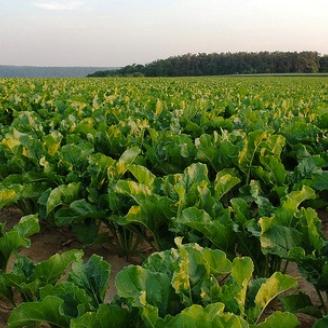
Reduced Tillage Sugar Beets
Conservation practices and sugarbeet production have not always come together. However, growers in the U.S. are making advances with conserving their soil by implementing reduce tillage methods in sugarbeet production.
Idaho
University of Idaho research paper “Effects of Strip Tillage and Irrigation Rate on Sugar Beet Crop Yield and Incidence of Insect Pests, Weeds, and Plant Pathogens” https://bsdf-assbt.org/wp-content/uploads/2020/02/Effects-of-Strip-Tillage.pdf
“The results presented here show that strip-till sugar beet can be produced with yields comparable to conventional tillage without compromising pest management programs.”
USDA-ARS and University of Idaho research paper. “Effects of Tillage System and Nitrogen Supply on Sugarbeet Production” https://eprints.nwisrl.ars.usda.gov/id/eprint/1502/1/1465.pdf
“Strip tillage can be used to obtain yields comparable to other common tillage practices and decrease tillage costs. Nitrogen requirements for all tillage practices could be reduced on heavier textured soils compared to past recommendations in the Pacific Northwest.”
Estimated tillage costs from strip till were 53% to 76% lower than other tillage systems tested.
Montana
No-Till Sugar Beets in Montana: Producer Perspectives (17 minutes includes dryland producers, and discussion about machinery used): https://www.youtube.com/watch?app=desktop&v=PMXz_MKzRC4
What do four no-till sugar beet growers have to say about how they got started, the challenges and opportunities they’ve seen, and advice for farmers considering making the change? Just try it. These four farmers grow sugar beets under varying conditions, but they have seen the same crucial benefits from no-till – decreased input costs and improved soil health.

How to Start the No-Till Journey
Featuring producers from Idaho and other western states.
Luke and Brian discuss their respective journeys in beginning no-till. Luke began with using cover crops and then sheep to manage the residue, while Brian went directly to no-till with support from an industry partner. Because their paths differed, Brian learned from Luke and Luke learned from Brian. This collaboration has made them both much stronger in their soil health endeavors. How to Start a No-till Journey

Farmer-to-Farmer Case Study Series
Farmer-to-Farmer Case Study Series
Abundant natural resources and an amenable climate allow for diverse agricultural opportunities in the Pacific Northwest, but the same environment also poses risks. Farmer-to-Farmer Case Study Series
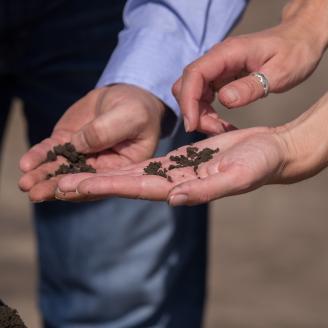
Idaho-Specific Soil Health Assessments
To view Idaho-specific soil health assessment documents, please visit this webpage.
Cover Crops
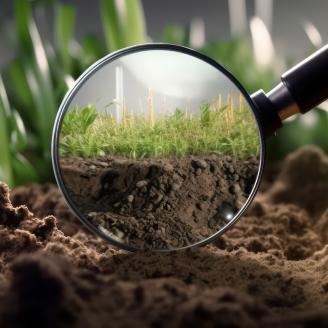
Story Maps
Idaho Soil Health StoryMap Idaho Soil Health (arcgis.com)
Explore Idaho Soils StoryMap Explore Idaho Soils (arcgis.com)
Top 10 Idaho Soils StoryMap Top 10 Soil Series of Idaho (arcgis.com)
National Soil Health Resources
Soil Health Assessment
Soil health is an assessment of how well soil performs all of its functions now and how those functions are being preserved for future use.
Learn MoreSoil Health Literature
Literature compiled from peer-reviewed papers relating to the impact of conservation practices on soil properties important for soil health.
Learn More

